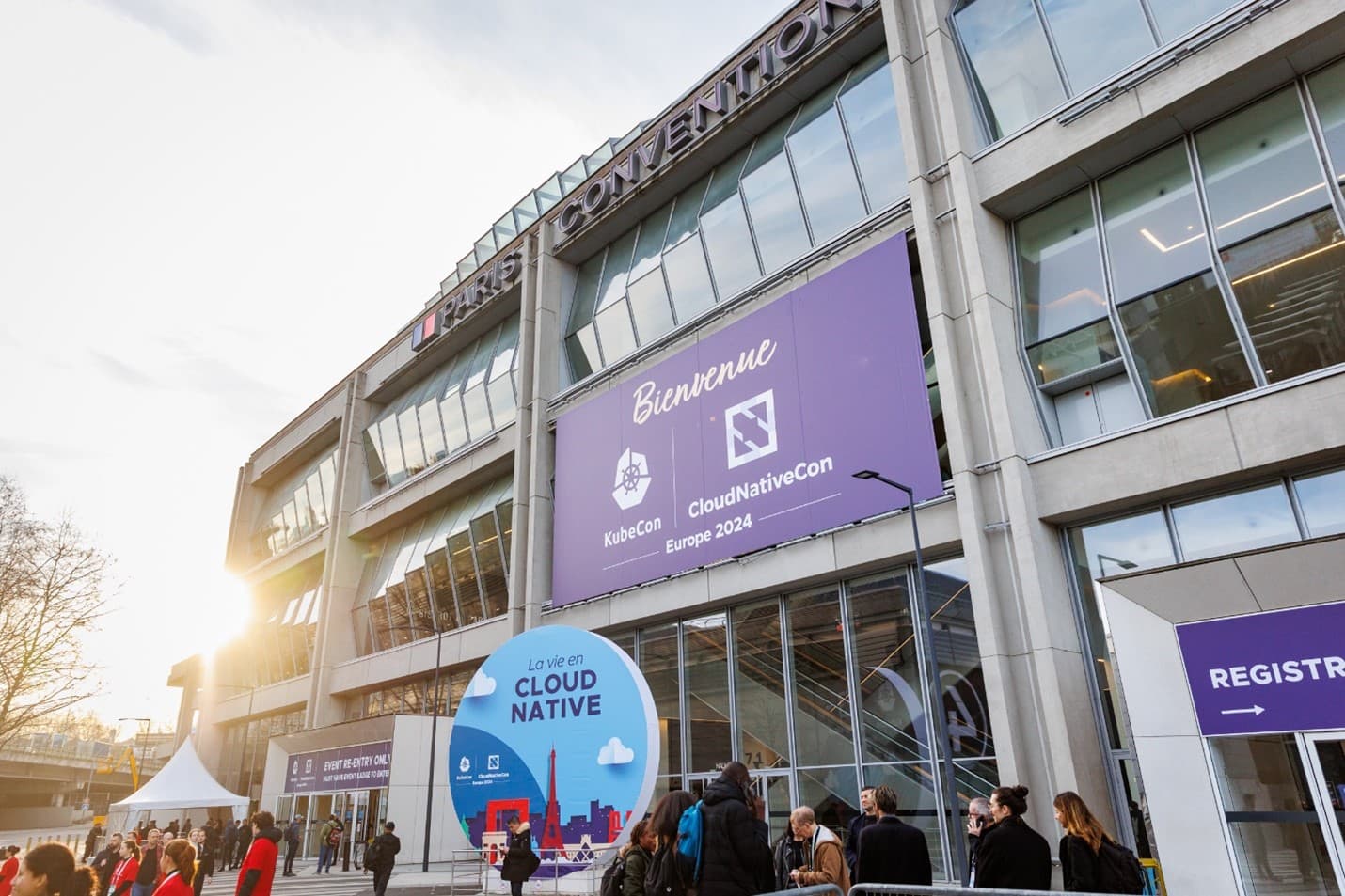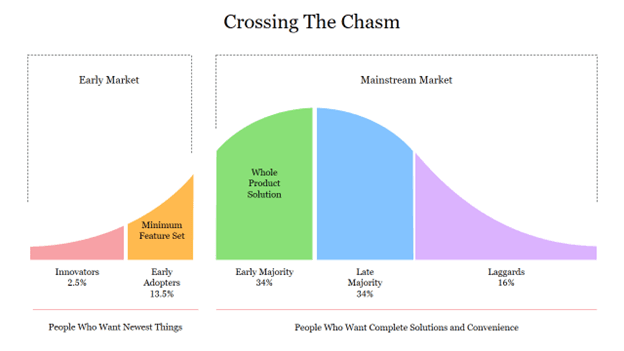

Introduction
KubeCon EU, the biggest Cloud Native conference of the year, just wrapped up in Paris. With over twelve thousand attendees, over 160 sponsors, this was the biggest KubeCon ever. The growth of this event, from its first incarnation in London just 8 years ago has been phenomenal to watch and reflects the growth and adoption of Cloud Native across the industry. While the first event was filled with innovators who were keen to explore the newest technologies, the event is now attended by folks across the Software Adoption Lifecycle Curve, as Kubernetes has become a standard on company’s cloud architecture roadmaps.

That said, the conference always provides strong signals of where the market is going, as it continues to evolve. This KubeCon was no different as we saw several newer trends taking a much larger presence. In this post we will cover the major trends of this year’s conference and how we expect those to play out in the market going forward.
Generative AI
Unsurprisingly the biggest theme underlying this year’s conference was AI, however the extent to which it was center stage and omnipresent seemed to surprise a few. The entire first day keynotes were AI focused, including Nvidia’s “Accelerating AI Workloads with GPUs in Kubernetes” Keynote: Accelerating AI Workloads with GPUs in Kubernetes – Kevin Klues & Sanjay Chatterjee. Combined with an entire AI Hub day event, and the simultaneous release of Cloud Native AI whitepaper it is clear that the Cloud Native Computing Foundation sees AI as the future and is positioning Cloud Native as the platform to best support its growth.
In discussing with end users and vendors at the conference, however it’s clear that we are still in very early days. Few companies have yet moved beyond the research and development, or proof of concept phase. It is clear everyone is focused on how they can leverage the latest AI breakthroughs to accelerate their growth, gain efficiency and stay ahead of their competition. It will be exciting to watch this space develop in the next 6-12 months.
Sustainability
The next major trend, which took mainstage in day two’s keynotes, including a great end user example from Deutsche Bahn (Keynote: Building IT Green: A Journey of Platforms, Data, and Developer Empowerment at Deutsche Bahn), was sustainability. We have gradually seen the subject of IT and the Cloud’s environmental impact become more of a concern. Werner Vogel set the stage with his proclamation in November last year at re:invent that this “a freight train that is coming your way and you cannot escape it.” Clearly, regulation is coming, which will require companies to report on carbon emissions and reduce them. Additionally, we are seeing end users asking sustainability questions when it comes to the products, services, and platforms they use.
In addition to the keynotes, there was a large number of sustainability focused talks, strong presence from the CNCF Sustainability TAG and many vendors in the Solutions Showcase pushing an environmental message. The most common alignment being between cost savings and carbon reduction, by optimizing our cloud architecture and usage we reduce both our monthly cloud bills as well as the carbon utilization, an easy win-win. For example, OpenCost introduced a new tool to measure your cloud carbon footprint. WebAssembly (or WASM) for example had a large presence at the event and is growing quickly in popularity. We saw the large efficiency gains which WASM provides aligned with the corresponding reduction in energy use as an added benefit of leveraging this new technology. This falls under the wider trend we have seen in the past 12-18 months of efficiency. We have seemed to reach the limits of this infinite computer called the cloud, and organizations are looking to reign in the sprawl, spread, and consumption.
So, whether it’s due to moral reasons, business goals, or regulation requirements, it’s clear that sustainability is going to become a major factor in cloud architecture moving forward.
Platform Engineering
The third major trend of this year’s event was Platform Engineering. More an evolution of patterns and processes rather than a completely new concept, Platform Engineering has emerged as a discipline describing the modern approach to building and operating a shared platform to empower development teams, accelerate time to value, while integrating security, compliance and reliability.
Keynote presentations from Bob Wise of Heroku and Solomon Hykes creator of Docker provided a great look back at the platforms of early days, and the original problems we were looking to solve. The problems remain the same today, though technology and the market have evolved. There was also an entire dedicated pre-conference event, Platform Engineering Day. Once again, in the Sponsors Showcase, many vendors positioned themselves as ‘developer platforms’, touting the benefits of developer experience, reducing cognitive load, and increased efficiencies.
Other Trends
Obviously, there were many other topics covered, over the four days, hundreds of presentations and sponsors. Security continues to grow as a concern and priority, as organizations grapple with the increasing complexity of their systems. Supply chain security in particular was a hot topic.
Similarly, observability tools and solutions have a large presence, as we attempt to better understand these sprawling platforms and applications. Whether the lens is cost savings, incident response, or business metrics, there is clearly a huge need to comprehend our cloud native systems.
Conclusion
It is amazing to see how far the community has come and how much the market has evolved in the past ten years since Kubernetes and the Cloud Native Computing Foundation first came on the scene. We have clearly entered the mainstream, where even the largest and most traditional companies are adopting these technologies. As a result, the rate of change for the core technologies (i.e. Kubernetes) has slowed as it becomes more stable and adapts to the new users. In contrast however, there is a continued influx of newer technologies and trends on the leading edge (eBPF, WASM, Cloud Native AI) whose future is less certain, but more exciting. KubeCon is a great event for providing insight into the current state of the industry as well as where it is headed in the future. Judging by the continued growth, the adoption, maturation and evolution of Cloud Native will continue deep into the age of AI.


Start the conversation
Want to learn more about how to unlock the potential of your data infrastructure? Talk to an infrastructure solutions expert today and find out how Aptum can help!






